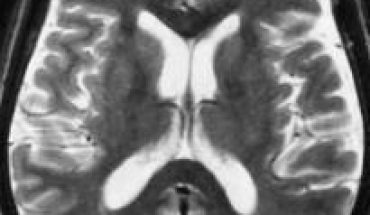A molar pregnancy occurs when tissue that would normally become a fetus instead becomes a growth and becomes lodged in the uterus. This mole causes symptoms of a pregnancy even though it isn’t an embryo. It is critical that a molar pregnancy be quickly treated in order to ensure that all of the mole tissue is removed. Complete removal of the mole tissue ensures that possible complications related to molar pregnancies are avoided. It is estimated that one in every 1000 women with early pregnancy symptoms has a molar pregnancy.
Factors That Lead to a Molar Pregnancy
A flaw in the genetic information of an egg or sperm is thought to be the main cause of a molar pregnancy. A molar pregnancy may fall into one of two categories, complete molar pregnancy or partial molar pregnancy.
Complete Molar Pregnancy
When a complete molar pregnancy occurs, the egg has no genetic information but has been fertilized by a sperm. The growth of the cell is limited meaning that it can only grow into a lump of tissue. It is incapable of developing into an embryo. This lump of tissue is called a mole and it looks like a bunch of grapes. A complete molar pregnancy can sometimes occupy the entire uterus.
Partial Molar Pregnancy
When a partial molar pregnancy occurs, it is triggered by the fertilization of an egg by two sperms. Ordinarilly this situation causes twin pregnancies but when there is a flaw, the result is a partial molar pregnancy.In this situation, the placenta becomes a mole and the product of any future development is likely to have severe defects. On rare occasions, pregnancies previously thought to be twins turn out to be a fetus and a mole.
Risk Factors for Molar Pregnancies
The factors below increase a woman’s chances of experiencing a molar pregnancy.
- Advanced maternal age is a risk factor for molar pregnancies. After age 35 a woman’s risk for molar pregnancy increases gradually.
- A history of molar pregnancy especially multiple molar pregnancies predisposes a woman to the condition.
- A history of miscarriages also increases a woman’s chances of experiencing a molar pregnancy.
- A diet that is deficient or low in carotene (a type of vitamin A) helps to increase the possibility of a woman having a molar pregnancy.
Symptoms of a Molar Pregnancy
The symptoms of a molar pregnancy are synonymous with those of a normal pregnancy and sometimes even a miscarriage. These symptoms include a missed period and morning sickness along with the following:
- Vaginal Bleeding
- A larger than normal uterus.
- Severe nausea and vomiting.
- Symptoms of hyperthyroidism such as: nervousness or fatigue, a rapid or irregular heartbeat, and profuse sweating.
- An uncomfortable pelvic sensation.
For the most part, these symptoms are typical of a normal pregnancy, a multiple pregnancy, or a miscarriage. What is notable however is the fact that a molar pregnancy also produces other symptoms. One such specific symptom is vaginal discharge of tissue that is shaped like grapes.
Diagnosis of a Molar Pregnancy
A medical professional typically confirms a molar pregnancy after the following procedures:
- A physical examination of the pelvis.
- A blood test to measure the patient’s pregnancy hormones.
- An ultrasound of the pelvis.





